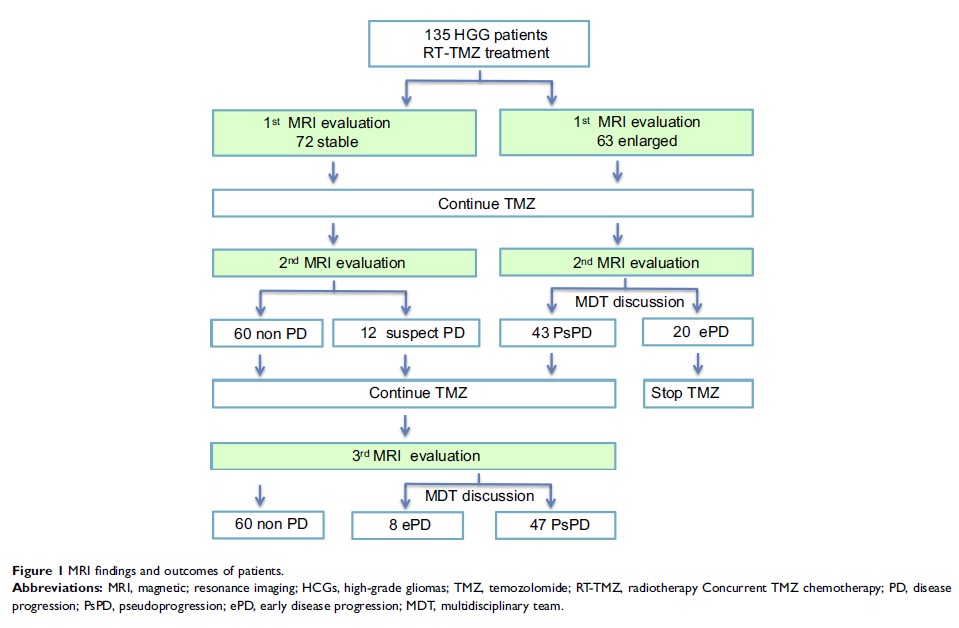9 0 9 6 8
论文已发表
注册即可获取德孚的最新动态
IF 收录期刊
- 2.6 Breast Cancer (Dove Med Press)
- 3.9 Clin Epidemiol
- 3.3 Cancer Manag Res
- 3.9 Infect Drug Resist
- 3.6 Clin Interv Aging
- 4.8 Drug Des Dev Ther
- 2.8 Int J Chronic Obstr
- 8.0 Int J Nanomed
- 2.3 Int J Women's Health
- 3.2 Neuropsych Dis Treat
- 4.0 OncoTargets Ther
- 2.2 Patient Prefer Adher
- 2.8 Ther Clin Risk Manag
- 2.7 J Pain Res
- 3.3 Diabet Metab Synd Ob
- 4.3 Psychol Res Behav Ma
- 3.4 Nat Sci Sleep
- 1.9 Pharmgenomics Pers Med
- 3.5 Risk Manag Healthc Policy
- 4.5 J Inflamm Res
- 2.3 Int J Gen Med
- 4.1 J Hepatocell Carcinoma
- 3.2 J Asthma Allergy
- 2.3 Clin Cosmet Investig Dermatol
- 3.3 J Multidiscip Healthc

中性粒细胞 - 淋巴细胞比率动态可用于区分高级别胶质瘤的复发和假性进展
Authors Huang Y, Ding H, Wu Q, Li Z, Li H, Li S, Xie C, Zhong Y
Received 30 January 2019
Accepted for publication 29 May 2019
Published 1 July 2019 Volume 2019:11 Pages 6003—6009
DOI https://doi.org/10.2147/CMAR.S202546
Checked for plagiarism Yes
Review by Single-blind
Peer reviewers approved by Ms Justinn Cochran
Peer reviewer comments 3
Editor who approved publication: Dr Rituraj Purohit
Objective: Distinguishing recurrence and pseudoprogression is a major challenge in the clinical practice of treatment for high-grade gliomas (HGGs). The neutrophil–lymphocyte ratio (NLR) has been reported to be closely related to survival in HGGs. We aimed to assess the predictive value of NLR in the differential diagnosis of recurrence and pseudoprogression.
Materials and Methods: A total of 135 patients with histologically confirmed HGGs were studied. All patients underwent focal radiotherapy and concomitant temozolomide (TMZ), followed by 6 cycles of TMZ if MRI showed no progressive enlargement of contrast-enhancing lesions. MRI evaluation was taken 4 weeks after concurrent chemoradiotherapy and then every 2 months later. NLR was calculated at 4 time points of preoperation, before concurrent RT-TMZ (pretreatment), 4 weeks following completion of RT-TMZ, and MRI showed lesion enlarged or treatment completed.
Results: In 135 patients, 47 (34.8%) were found to be pseudoprogression (PsPD), and 28 (20.7%) were early disease progression (ePD). The mean pretreatment and post-treatment NLR were 4.2±2.1 and 5.1±3.5, respectively. The median overall survival in the PsPD group (25.2 months) was significantly longer than in the ePD (15.4 months) and no progression group (nPD) (21.6 months) (p <0.001). Overall survival was significantly shorter in the baseline NLR≥4 cohort compared with NLR<4 (p =0.03), but no significant difference was found between PsPD and ePD (p =0.197). Patients with decreased NLR showed significantly longer survival than no decreased group (p <0.001), and decreased NLR was found to be a significant difference between PsPD and ePD (p =0.022). Univariate and multivariate logistic regression analyses suggested that decreased NLR was an independent prognosis factor (p =0.031).
Conclusion: Decreased NLR is an independent prognostic factor and is useful for distinguishing between recurrence and pseudoprogression in HGGs.
Keywords: neutrophil–lymphocyte ratio, high-grade gliomas, pseudoprogression, prognostic factors
